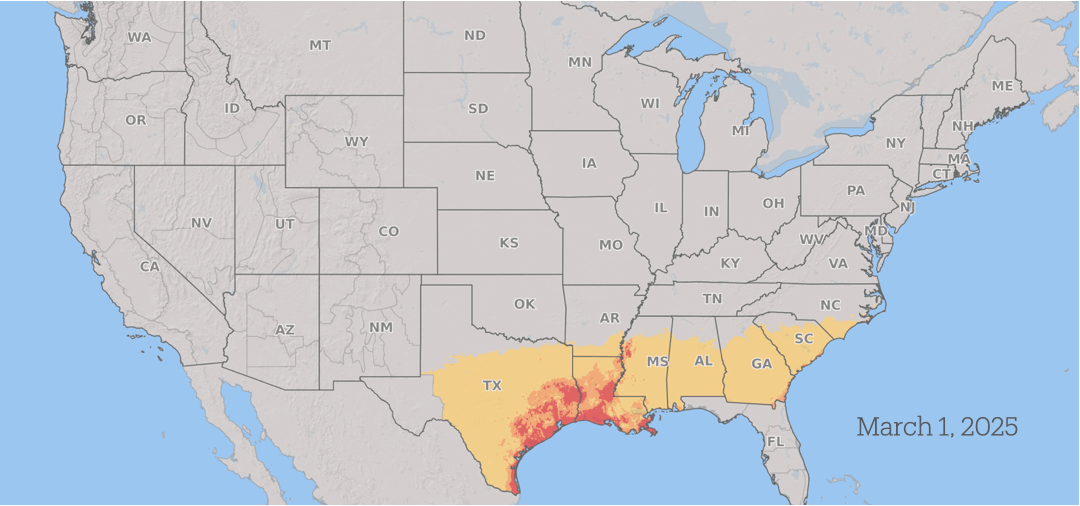also with fusarium graminearumWhich has appeared on every continent except Antarctica, has the potential to introduce new genetic material into the environment that may be present in other countries but not in the Americas and can have harmful consequences for crops.
how do you manage fusarium graminearum Infection?
fusarium graminearum Infection usually occurs during the flowering stage of the plant or when there are periods of excess rainfall and high humidity during the early stages of grain production.

How fusarium graminearum Risk increases in 2025. Yellow is low risk, orange is medium risk, and red is high risk. Fusarium Risk Tool/Penn State
Wheat is vulnerable to infection during the spring season in South America. As the season progresses, as grain crops ripen throughout the region, the threat of scab increases northward through the US and Canada, with favorable weather throughout the summer.
between seasons, fusarium graminearum Barley, wheat and corn survive on plant residues that remain in the field after harvest. It reproduces by producing microscopic spores that can then travel long distances on wind currents, spreading the fungus over large geographic areas each season.
In wheat and barley, when most susceptible to infection, farmers can suppress damage by spraying fungicides on the ends of growing wheat. Applying fungicides can reduce scab and its severity, improve grain weight, and reduce mycotoxin contamination.
However, integrated approaches to managing plant diseases are generally ideal, including planting varieties of barley or wheat that are resistant to scab as well as using carefully timed fungicides, rotating crops, and tilling the soil after harvest to reduce residues. fusarium graminearum Can avoid cold.
Although the use of fungicides may be beneficial, fungicides only provide some protection and cannot cure scab. If environmental conditions are extremely favorable for scab, with sufficient moisture and humidity during flowering, the disease will still occur at low levels.
Fusarium Head Blight with NDSU’s Andrew Friskopp.
Plant pathologists are making progress on early warning systems for farmers. A team from Kansas State University, Ohio State University and Pennsylvania State University is developing a computer model to predict the risk of scab. Their wheat disease forecast model uses historical and current environmental data from weather stations across the US along with current conditions to develop forecasts.
In areas that are most at risk, plant pathologists and commodity experts encourage wheat growers to apply fungicides during periods when the fungus is likely to grow to reduce the potential for damage to crops and the spread of mycotoxins.
Tom W. Allen, Associate Research Professor of Plant Pathology, Mississippi State University. This article is republished from The Conversation under a Creative Commons license. Read the original article.
